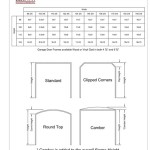How to Install an Exterior Garage Door Opener
Installing an exterior garage door opener can significantly enhance convenience and security. This addition allows remote operation of the garage door, eliminating the need to manually open or close it. Successful installation requires careful planning, adherence to safety protocols, and a solid understanding of the mechanical and electrical components involved. This article provides a comprehensive guide to installing an exterior garage door opener, covering essential steps from preparation to testing the final setup.
Preparation and Planning
Prior to commencing the installation process, a thorough preparation phase is crucial. This stage involves assessing the existing garage door system, gathering necessary tools and materials, and understanding the specific requirements of the chosen garage door opener model. This comprehensive approach minimizes complications and ensures a smooth and efficient installation.
First, it is essential to determine the type of garage door opener that best suits the needs. Several types are available, including chain drive, belt drive, screw drive, and direct drive openers. Chain drive openers are generally the most affordable but can be noisy. Belt drive openers offer quieter operation but are typically more expensive. Screw drive openers are known for their reliability and low maintenance, while direct drive openers provide smooth and quiet operation with fewer moving parts.
Next, a physical inspection of the garage door and its surrounding structure is needed. The garage door should operate smoothly and without excessive resistance. Any issues, such as sticking or binding, should be addressed before installing the opener. Check the springs, rollers, and tracks for wear or damage. A malfunctioning door can place undue stress on the opener, potentially leading to premature failure.
The garage structure itself needs to be assessed for its ability to support the opener. The mounting location for the opener unit must be solid and capable of bearing its weight. If the structure is weak or unstable, reinforcement may be necessary. This might involve adding wooden supports or metal brackets to ensure a secure mounting surface.
Gathering the necessary tools is an important step in the preparation process. Common tools required for installation include a ladder, measuring tape, level, drill, socket set, adjustable wrench, screwdrivers (both Phillips head and flathead), wire strippers, and safety glasses. Depending on the type of opener and the existing wiring, additional tools may be needed.
Consulting the instruction manual provided with the garage door opener is critical. The manual contains specific instructions and diagrams for the particular model. Adhering to these instructions ensures proper installation and avoids potential safety hazards. It will also detail any specific hardware requirements and wiring configurations.
Finally, safety should be prioritized throughout the entire installation process. Wear safety glasses to protect eyes from debris and disconnect power to the garage door circuit before working on any electrical components. Having a helper can also make the process safer and more manageable, especially when lifting and positioning heavy components.
Installing the Garage Door Opener
The actual installation process involves several key steps, including mounting the opener unit, attaching the rail and trolley, connecting the door arm, and wiring the electrical components. Each step requires careful attention to detail to ensure proper functionality and safety.
The first step is to mount the opener unit to the garage structure. The mounting location should be centered above the garage door opening and securely attached to a solid structural member. Use a ladder to reach the mounting location and ensure it is level. Use lag screws or through-bolts to secure the opener unit to the structure. If necessary, install additional wooden supports to provide a stronger mounting base.
Next, assemble the rail and trolley according to the manufacturer's instructions. The rail serves as the track along which the trolley moves, pulling the door open and closed. The trolley is the connecting piece between the opener unit and the door arm. Slide the trolley onto the rail and attach the rail to the opener unit, securing it with bolts and nuts. Ensure the rail is properly aligned and level before tightening all connections.
After the rail is installed, attach the door arm to the trolley and the garage door. The door arm connects the trolley to the top section of the garage door. Position the door arm bracket on the door and secure it with bolts or screws. Connect the door arm to the trolley and the bracket, ensuring it is properly aligned and securely fastened. Test the movement of the trolley along the rail to ensure it moves smoothly and without binding.
Wiring the electrical components is a critical step that requires careful attention to safety. Disconnect power to the garage door circuit before beginning any wiring work. Connect the opener unit to a dedicated electrical outlet, using the appropriate wiring gauge and grounding. If the opener requires hardwiring, follow the manufacturer's instructions carefully and ensure all connections are secure and properly insulated. Install safety sensors near the bottom of the garage door to prevent the door from closing if an obstruction is detected. These sensors should be wired according to the manufacturer's instructions.
Adjust the limit switches to control the opening and closing positions of the garage door. The limit switches tell the opener when to stop the door at the fully open and fully closed positions. Adjust these switches according to the manufacturer's instructions, using a screwdriver or adjustment tool. Test the door's movement to ensure it stops at the correct positions and make any necessary adjustments.
Finally, install the push-button control inside the garage and any remote control devices. Connect the push-button control to the opener unit according to the manufacturer's instructions. Program the remote control devices to operate the opener, following the programming instructions. Test all controls to ensure they function properly and reliably.
Testing and Adjustments
Once the installation is complete, thorough testing and adjustments are necessary to ensure the garage door opener functions safely and reliably. This involves checking the door's movement, verifying the safety features, and making any necessary adjustments to the limit switches or force settings.
Begin by testing the door's movement using the push-button control and remote control devices. The door should open and close smoothly and without excessive noise or vibration. If the door hesitates or binds, re-check the alignment of the rail and door arm. Make any necessary adjustments to ensure smooth and consistent operation.
Verify that the safety sensors are functioning correctly. Place an object in the path of the garage door while it is closing. The door should automatically reverse direction when it detects the obstruction. If the door does not reverse, check the wiring and alignment of the safety sensors. Make any necessary adjustments to ensure they are functioning properly.
Adjust the force settings on the opener unit to prevent damage to the door or objects in its path. The force settings determine how much force the opener applies when opening and closing the door. Adjust these settings according to the manufacturer's instructions, using a screwdriver or adjustment tool. The door should open and close with sufficient force to operate reliably, but not so much force that it could cause damage.
Check the operation of the manual release mechanism. The manual release allows the door to be opened and closed manually in the event of a power outage. Test the release mechanism to ensure it functions smoothly and allows the door to be operated easily. Familiarize yourself with the operation of the manual release in case it is needed in an emergency.
Inspect all connections and fasteners to ensure they are secure and properly tightened. Check the wiring for any loose connections or frayed wires. Make any necessary repairs or replacements to ensure the electrical system is safe and reliable.
Listen for any unusual noises or vibrations during operation. These sounds could indicate a problem with the opener unit or the garage door system. Investigate any unusual noises and make any necessary repairs to prevent further damage.
Finally, review the instruction manual and safety guidelines to ensure a complete understanding of the opener's operation and safety features. Keep the manual in a safe place for future reference. Regular maintenance, such as lubricating the moving parts and inspecting the safety features, will help ensure the opener continues to function safely and reliably for years to come.
By following these steps carefully and adhering to safety guidelines, the installation of an exterior garage door opener can be achieved successfully. This addition will provide convenience, security, and enhanced functionality to the garage system.

How To Install A Garage Door Opener With Pictures Wikihow

How To Install A Garage Door Opener With Pictures Wikihow

How To Install A Garage Door Opener With Pictures Wikihow

How To Install A Keypad For Your Garage Door Gold Label

Install A Wireless Keyless Entry For Your Garage In Minutes With Tinged Blue

How To Open A Garage Door Manually From The Outside Inside

Wireless Garage Door Keyless Entry System Liftmaster

Garage Door Keypad Installation

How To Open A Garage Door Manually From The Outside Inside
Diy Garage Door Installation Tips And Tricks Howstuffworks
Related Posts








